I’m starting a series on the wonderful adventures waiting for you on the peninsula that reaches out to Cap Ferrat located between Beaulieu~sur~Mer and Villefranche~sur~Mer on the French Riviera. This magical and mysterious property has been under renovation for YEARS now, I have read that it is supposed to open sometime this year, and I can’t wait to see how it has changed.
Until then, for your pleasure, I present the “original” Villa Santo Sospir, where artist Jean Cocteau “tatooed” the walls with his entrancing frescos of mythical and Mediterannean life scenes in the summer of 1950. Meanwhile, within these walls he was living there with socialite Francine Weisweiller and they were avidly entertaining the top artist, designers and world leaders of this golden era on the French Riviera.
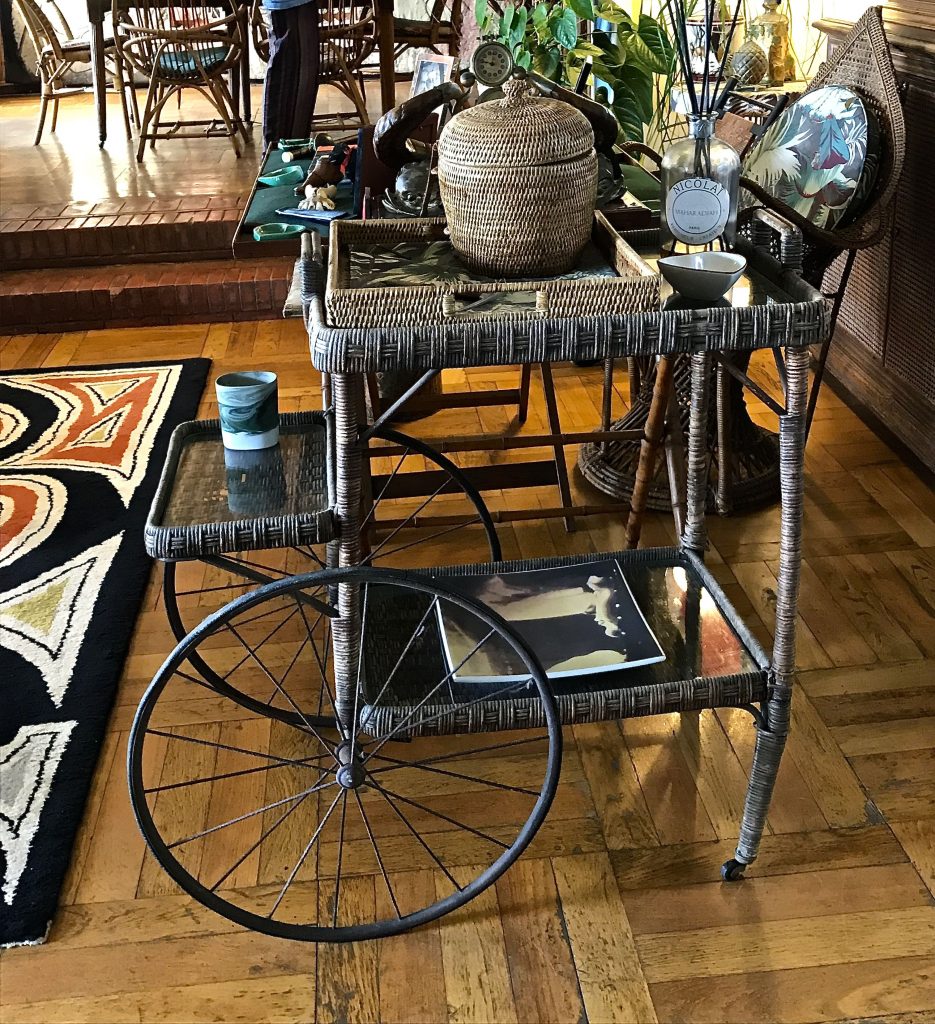
The visit was ever more enriched than I had imagined because of the furnishings, personal momentos and special little treasures belonging to this transforming duo that were still in place. As I toured the house I felt like I might actually bump into one of them.
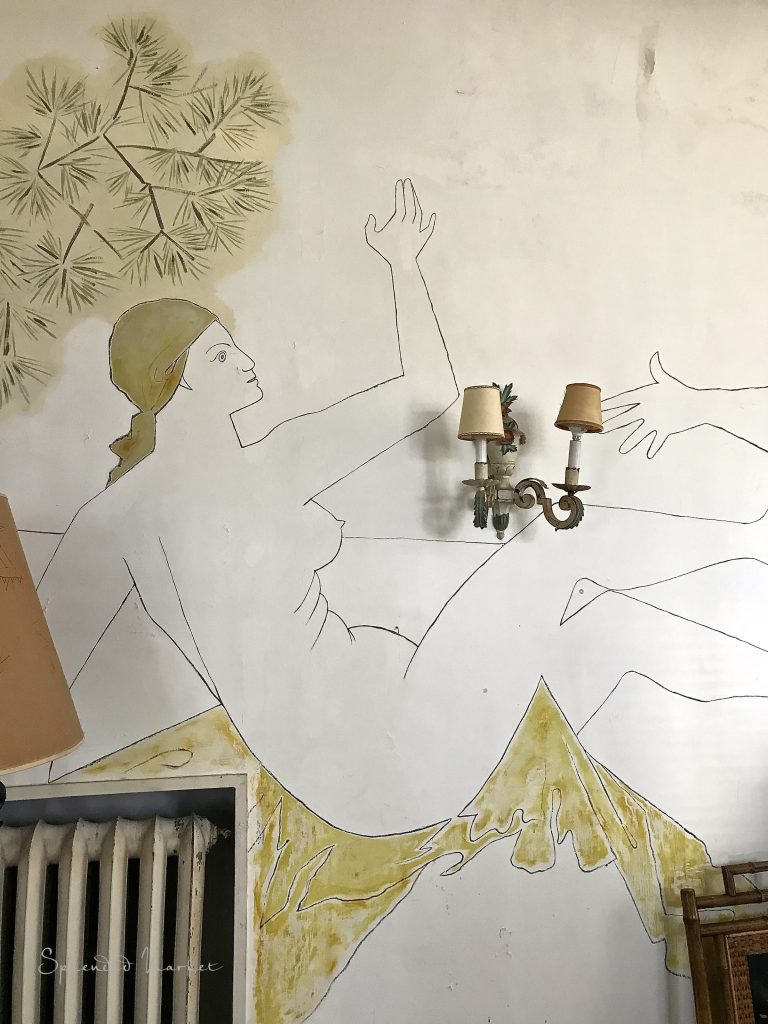
The “lived in” aura created a sense of timelessness, and made me feel like I was suddenly living on French Riviera back in the 1950’s, a magical, creative and much simpler time on this unique stretch of land on the Mediterranean Sea.
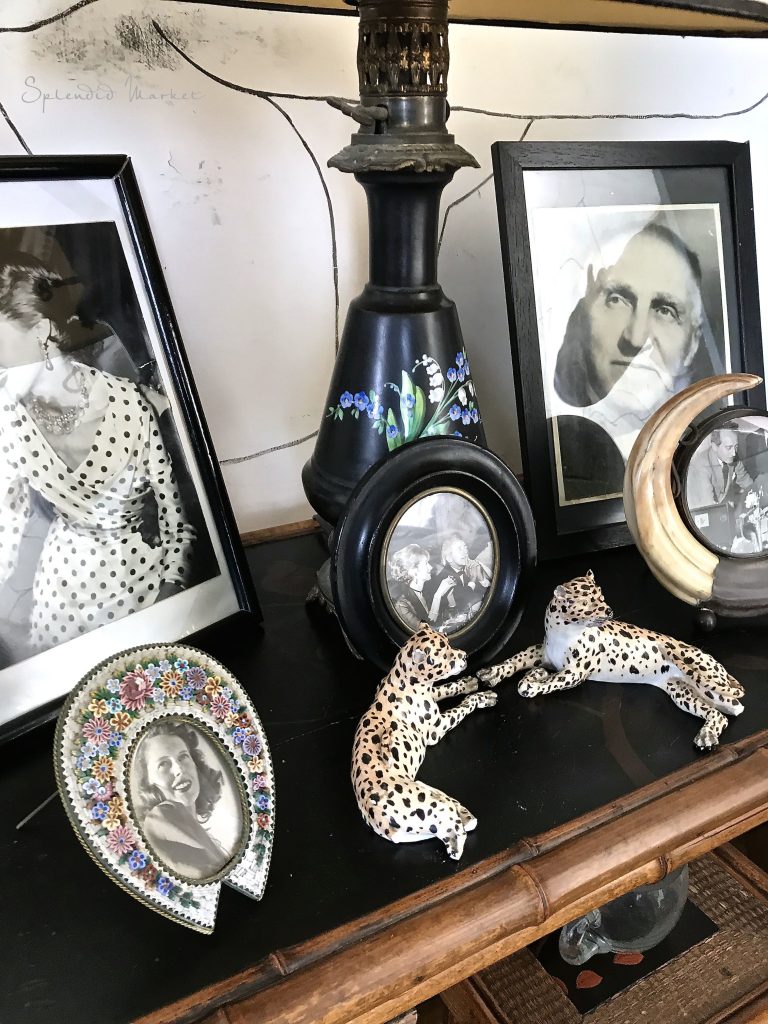
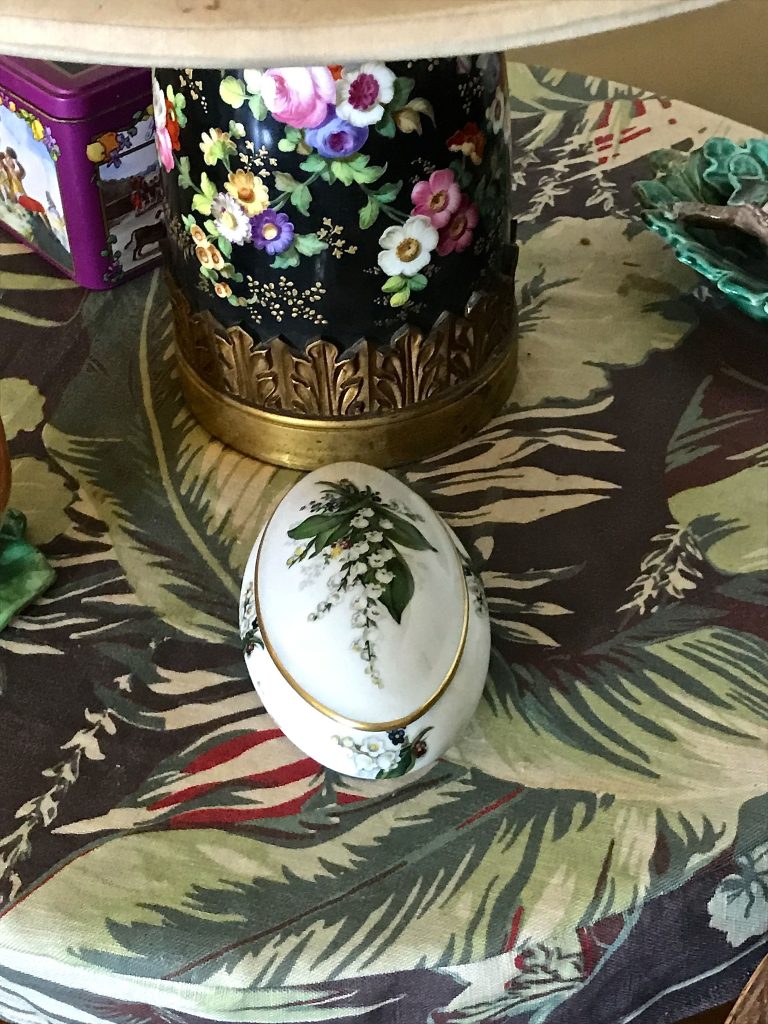
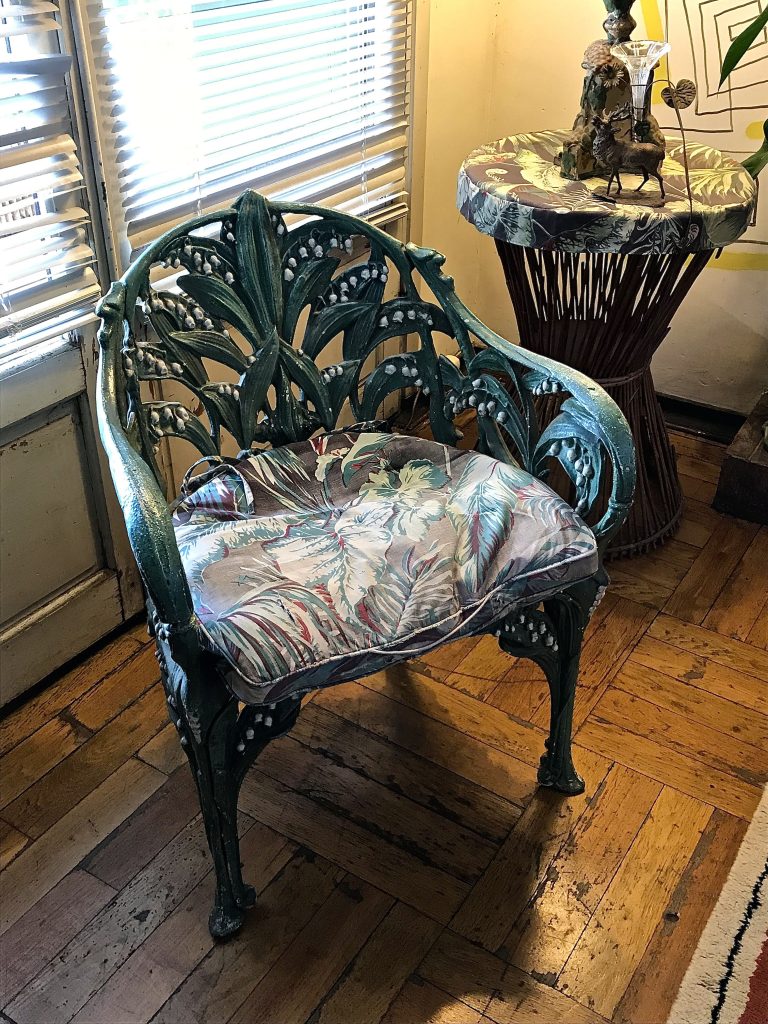
If all of that wasn’t enough our guide was the caretaker who actually has known the family and many of the intimate details of their lives which he shared freely…. his information was a little spicier than the official history printed on the website.

If, by any chance you’ll be in the the area I hope you will call to set up a tour {contact information below}. The house is scheduled to be renovated in 2 years, and while I am sure it will be done carefully, it won’t be quite the same, the smells will be freshened, the cracks in the walls will be smoothed and the smudges on the walls and the furnishings which have developed over time will be wiped clean.
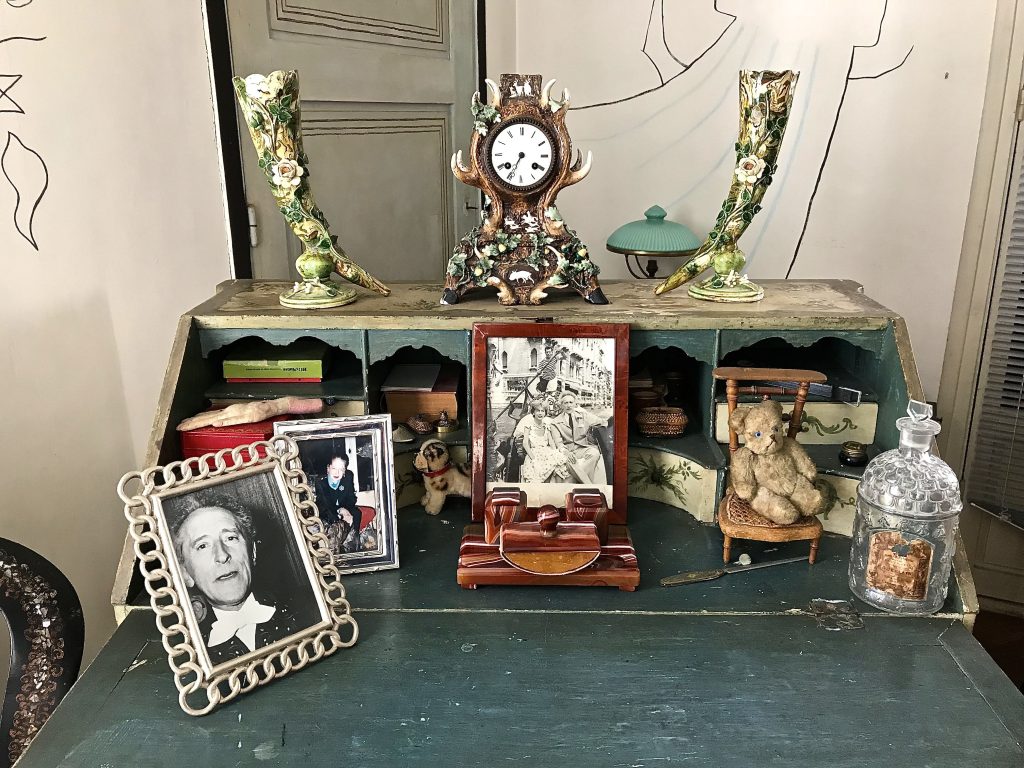
If you are not heading to the area, worry not, just sit back and scroll down and I’ll share all of the highlights with you.
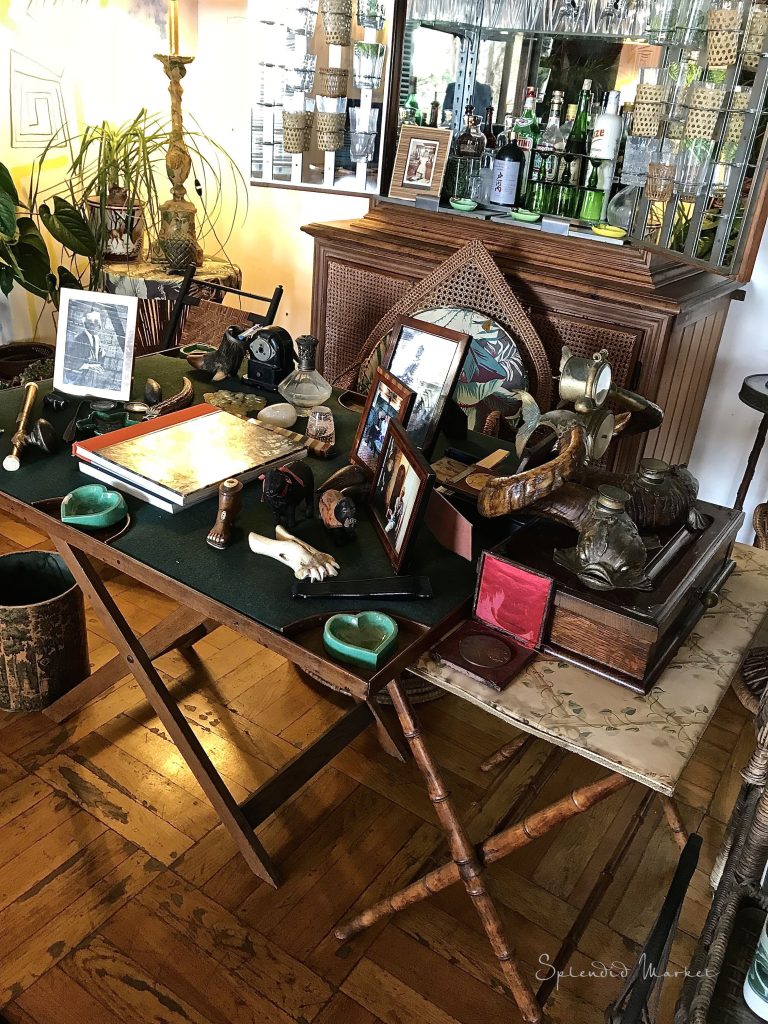
Villa Santo Sospir is located on the peninsula of St. Jean Cap Ferrat overlooking the bay of Villefranche~sur~mer to the east
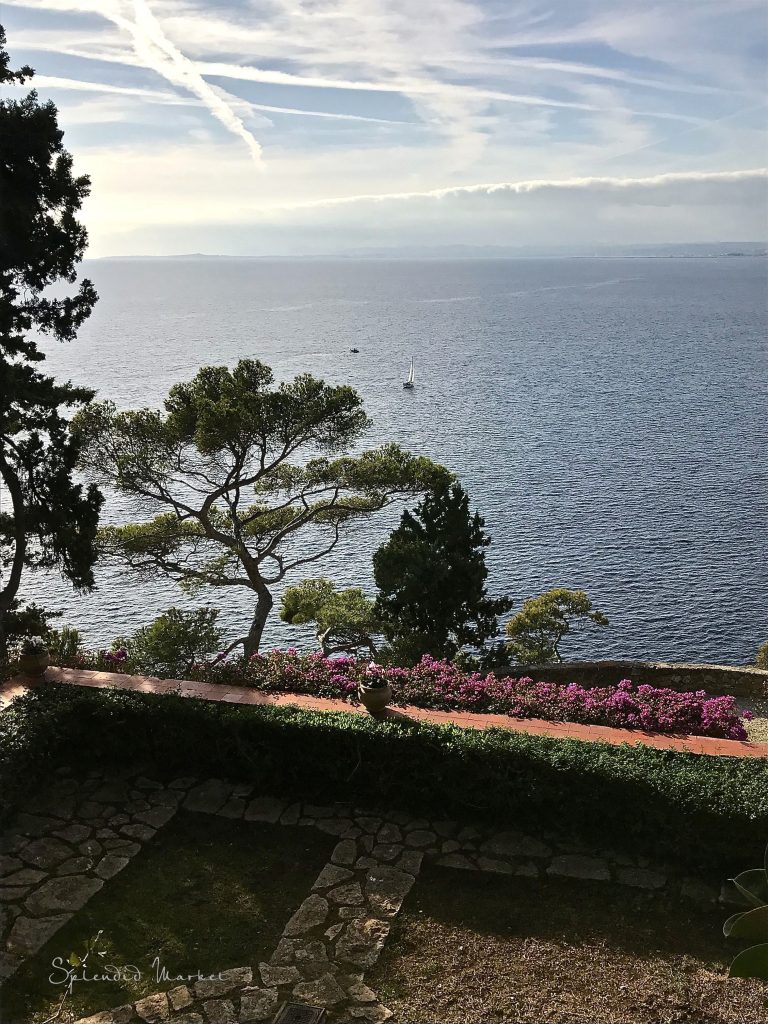
and looking to Le Phare, the Cap Ferrat lighthouse to the south. The name comes from a 6th century monk who lived there, prior to it’s current name the entire pennisula was previously know as Cap Saint Sospier.
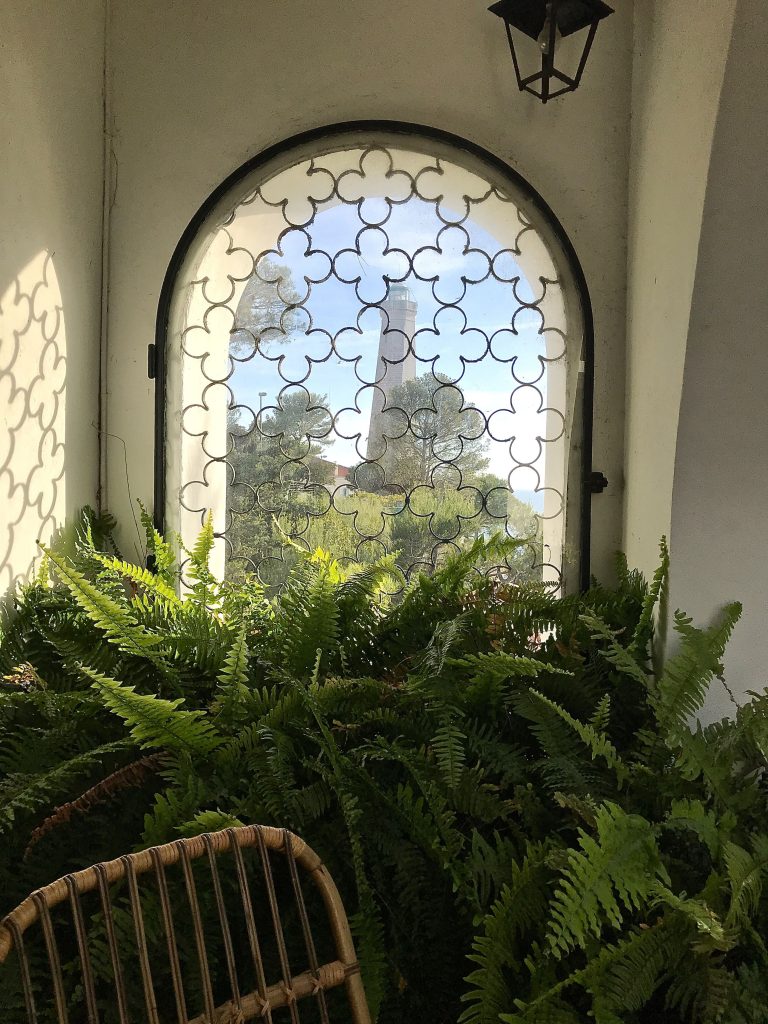
The villa was owned by French socialite Francine Weisweiller. In 1946 she met Jean Cocteau when he was shooting his film Les Enfants Terrible in the area and invited him and his partner Edouard Dermit to come and stay with her.
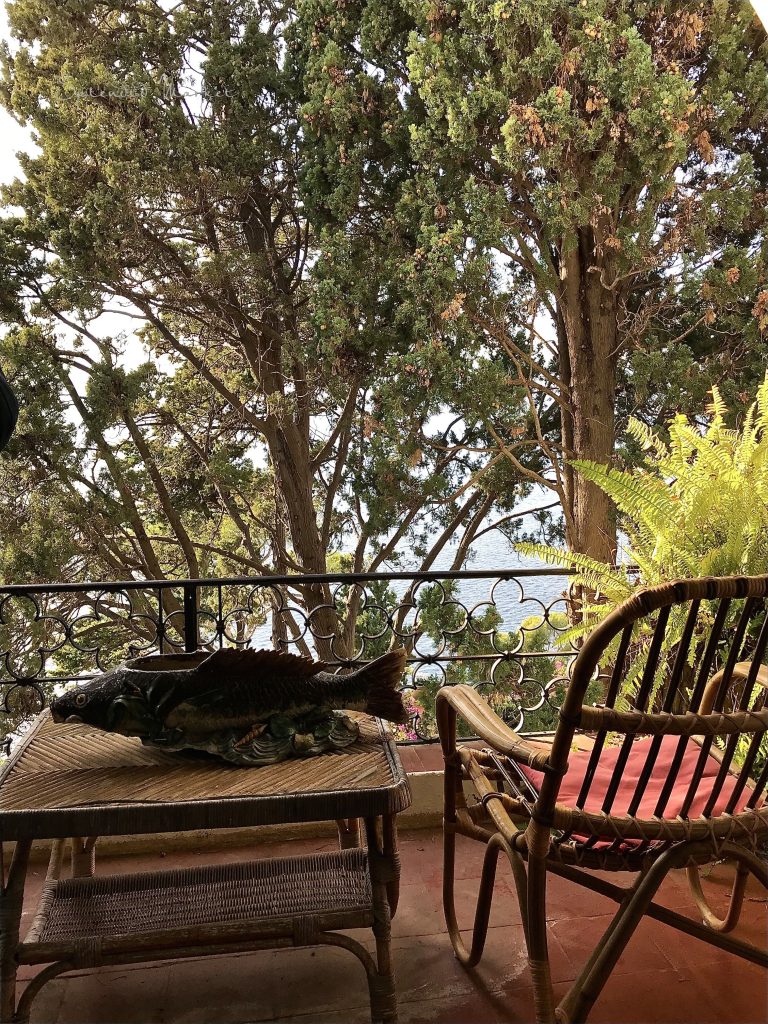
The time they spent here together resulted in many beautiful creation in the area as well as the original Trinity de Cartier ring. Cocteau was friends with Cartier and worked with him to design the ring, a symbol of the ménage à trois the trio enjoyed. This was a vacation home for Francine and her family so when Cocteau arrived there wasn’t any art on the walls, which didn’t seem right to this visionary. He asked Francine if he could paint the head of Apollo, the greek god of music, above the fireplace, to occupy his time, and this is where it all began.

He sketched out the designs in charcoal and then added colors by mixing colored powders with raw milk.

One day Picasso came to visit and said something to the affect of “when you decorate one wall, you must decorate the others”, and so the designs began to wrap around the living room.

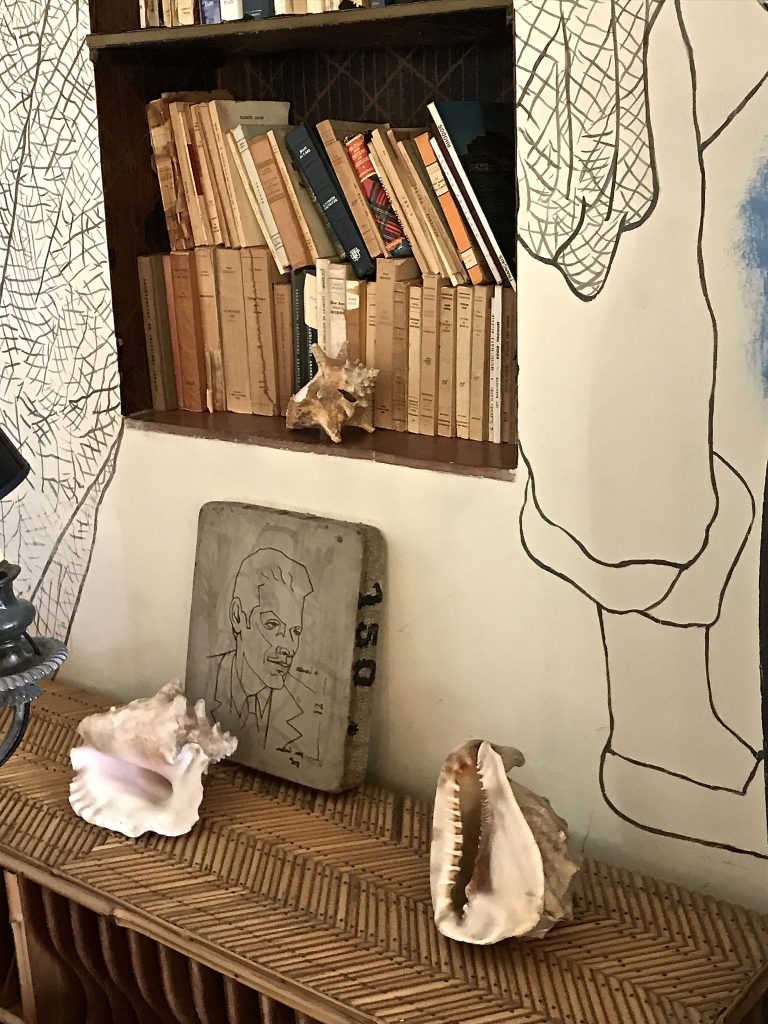
His themes were of Greek mythology and the French Riviera lifestyle, including the local fishermen. The image below is of Francine relaxing in the Mediterranean sun, next to her are sea urchins, one cut open with a knife and a Fougasse, the traditional flatbread of Nice.
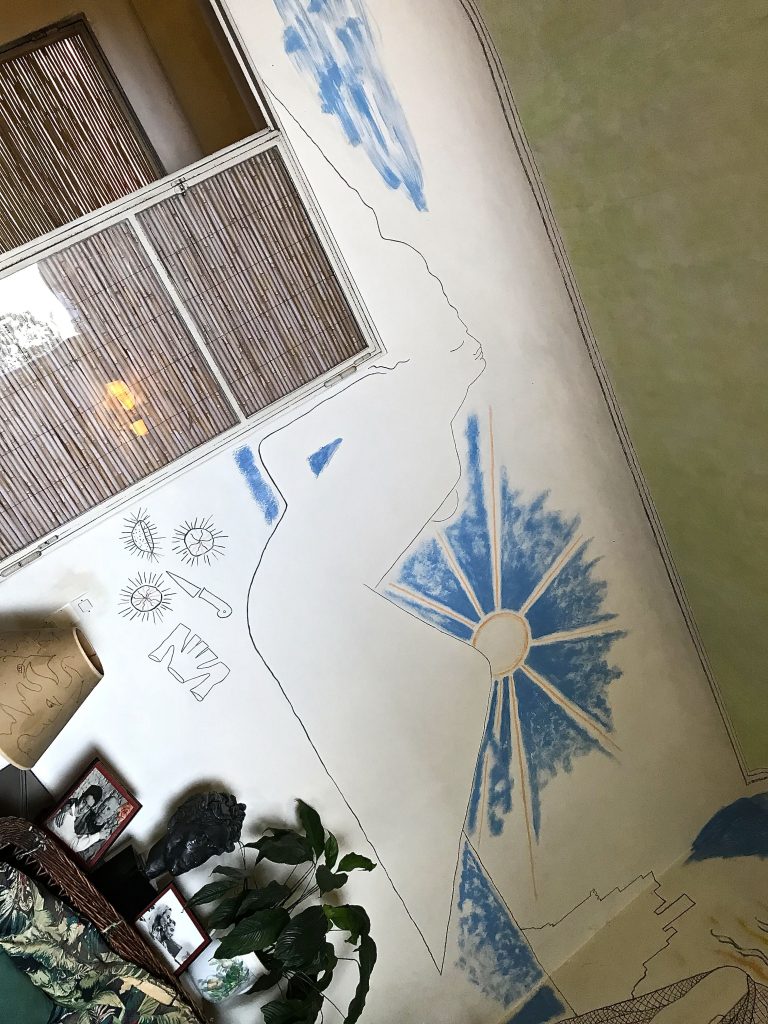
This cabinet bar is positioned between the living room and the dining room, looking out through the French doors that lead to the terrace.
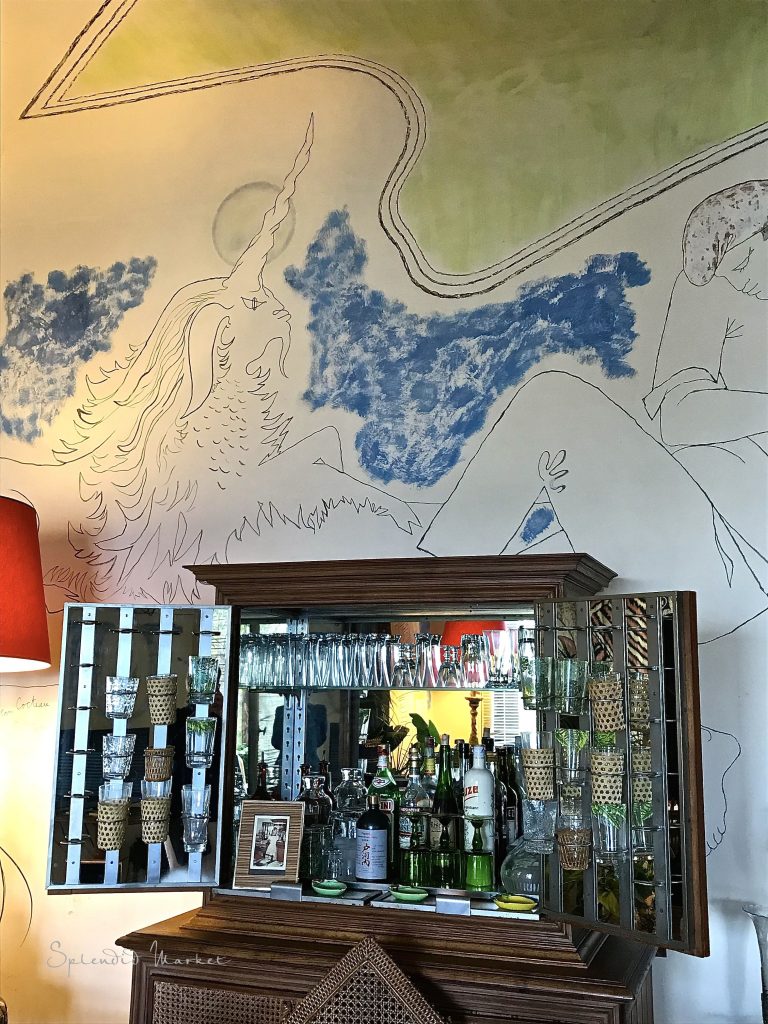
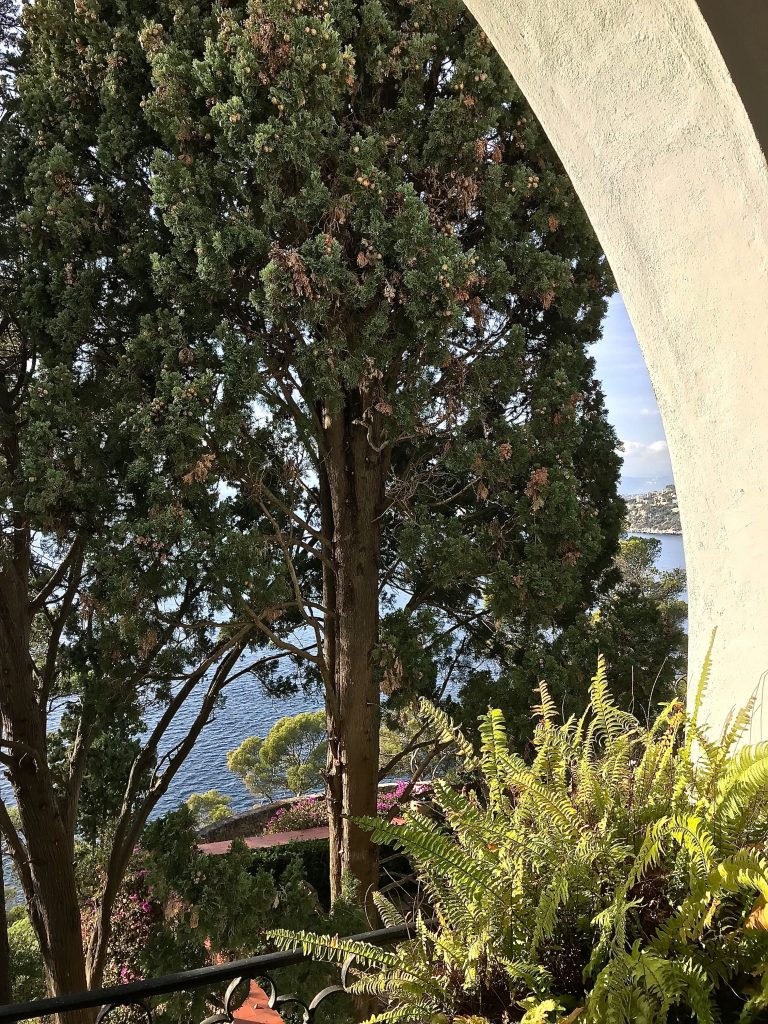
The dining room feels as though you are in a rustic hut with the woven twig coverings. The original cabinets, worn dining table and chairs are still present. Can you imagine the personalities who have sat around this table and the conversations they must have had…. Marlene Dietrich, composer Francis Poulenc, Coco Chanel, Picasso, Greta Garbo, Yves Saint~Laurent, Igor Stravinsky and Francois Trauffout just to name a few?
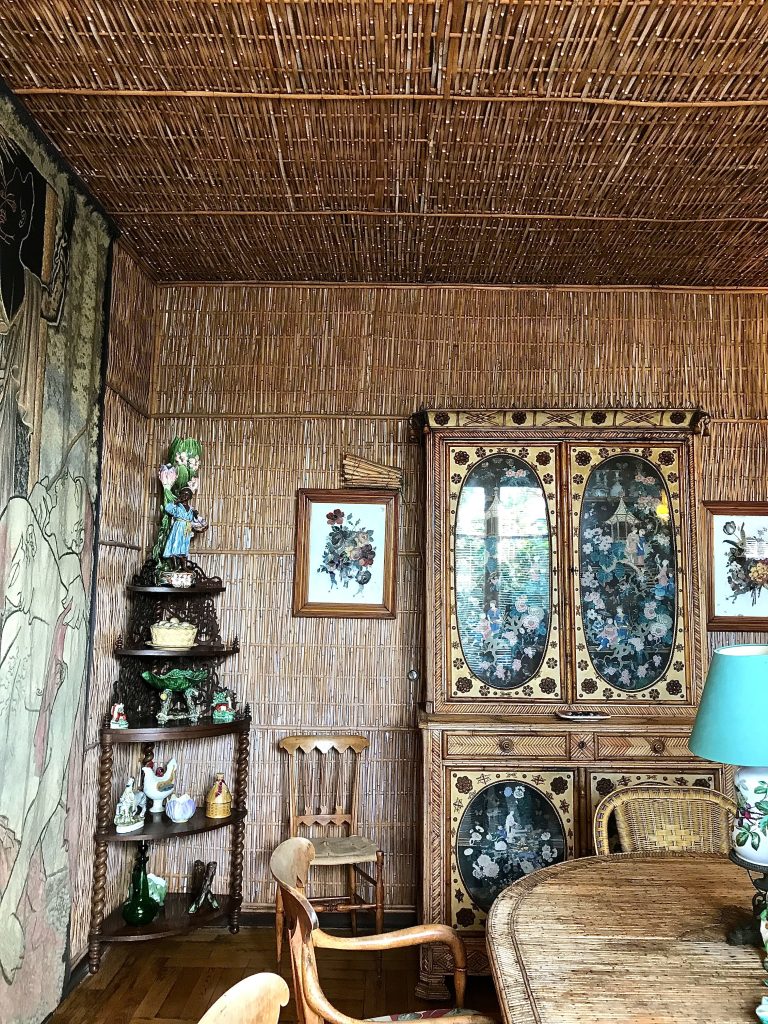
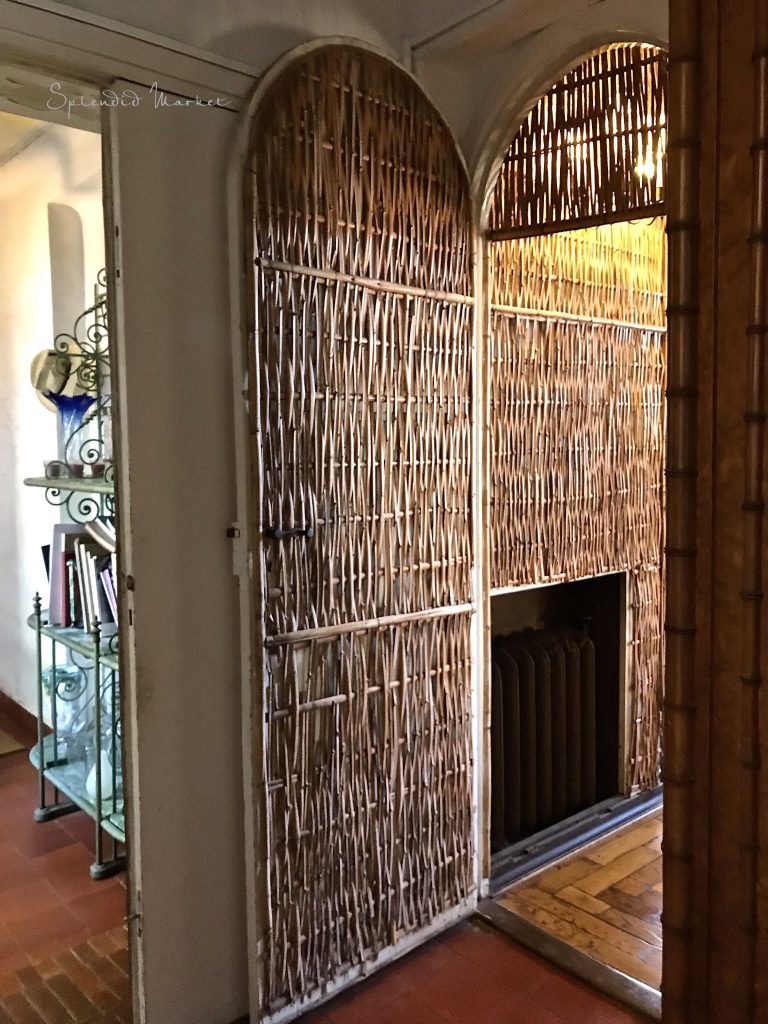
On the back wall is this tapestry painted by Cocteau.
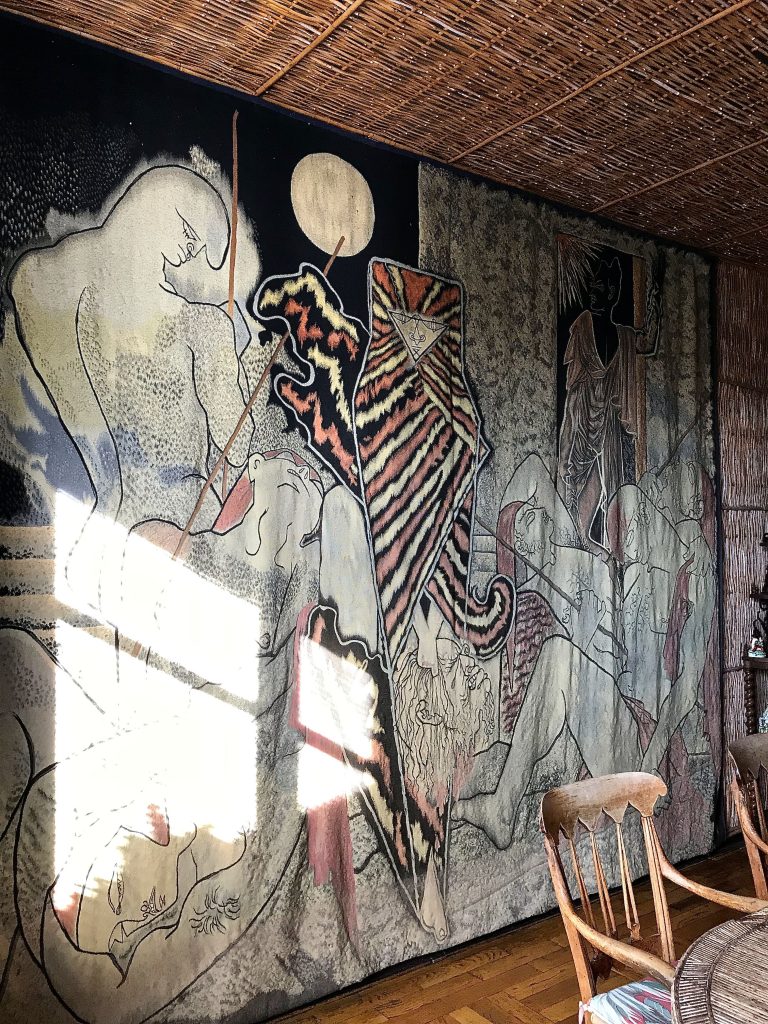
The tour was much more intimate than I had ever hoped it would be. After covering the upstairs, this angel beckoned us down this painted stairwell to the bedrooms.
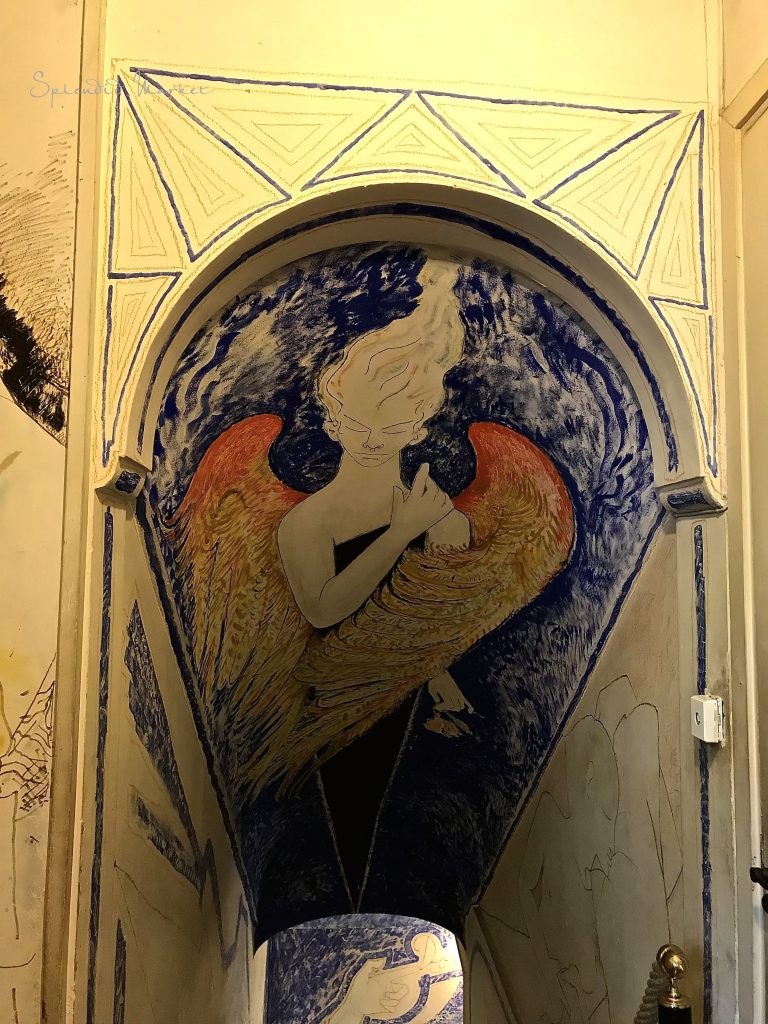
Francine’s daughter Carole still stays in the house and the living quarters aptly reflect a lived in home.
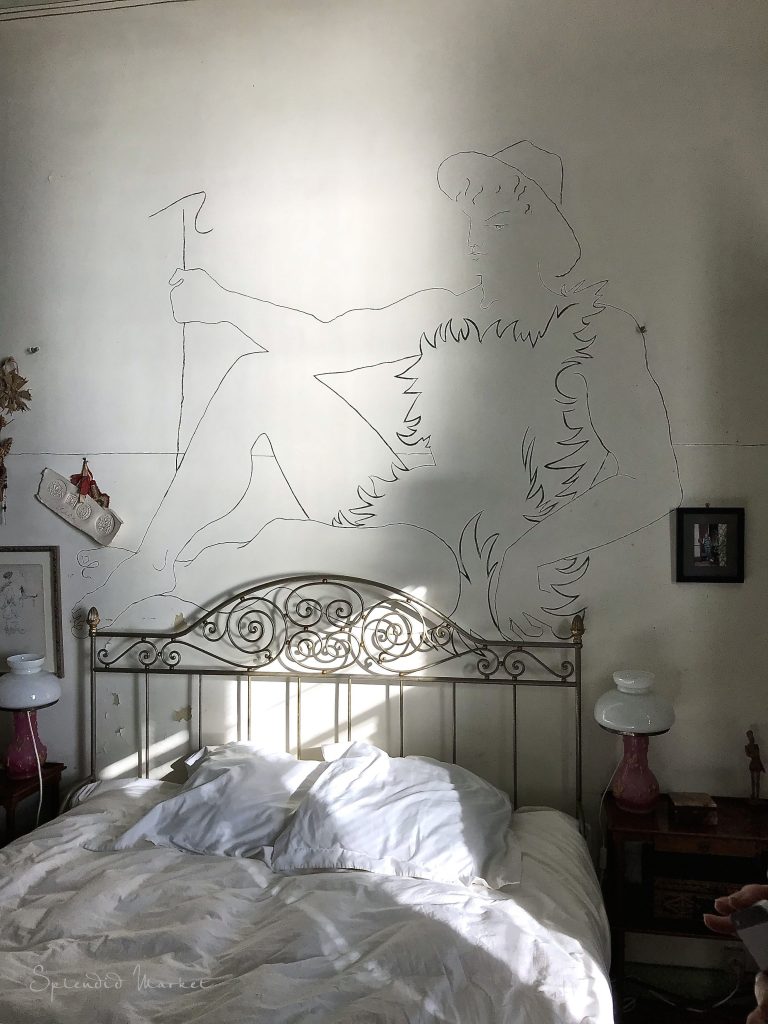
This bedroom is decorated with elaborate images of an angelic choir.
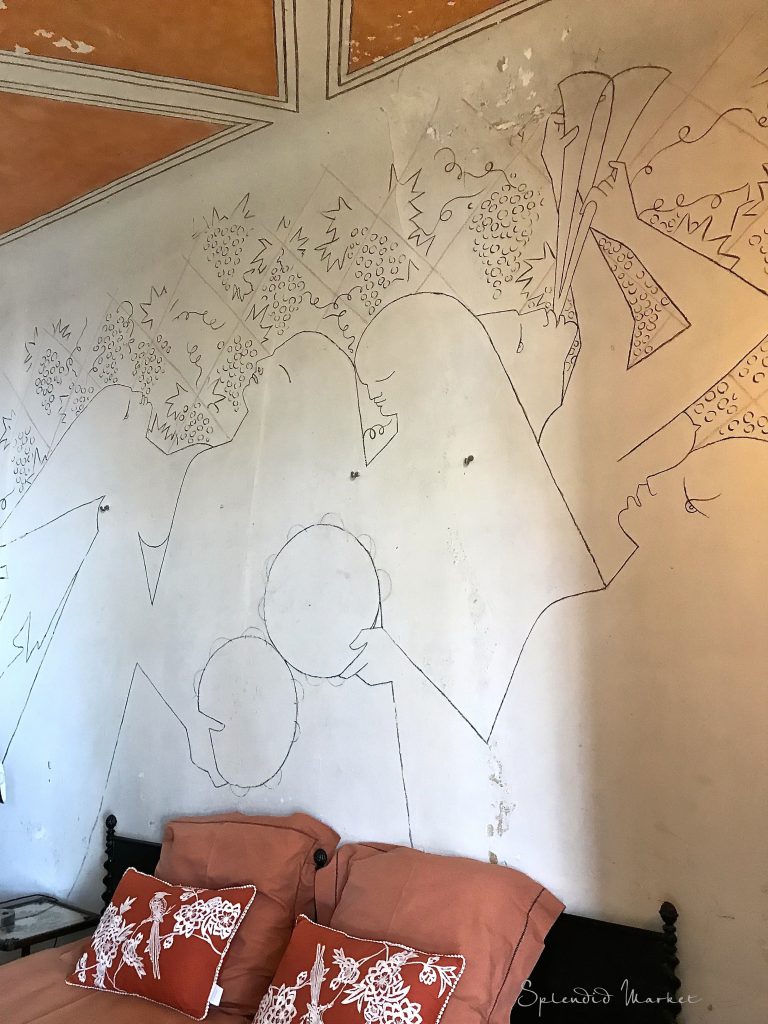
Cocteau painted all of the walls first and then spread color and design to the ceilings.
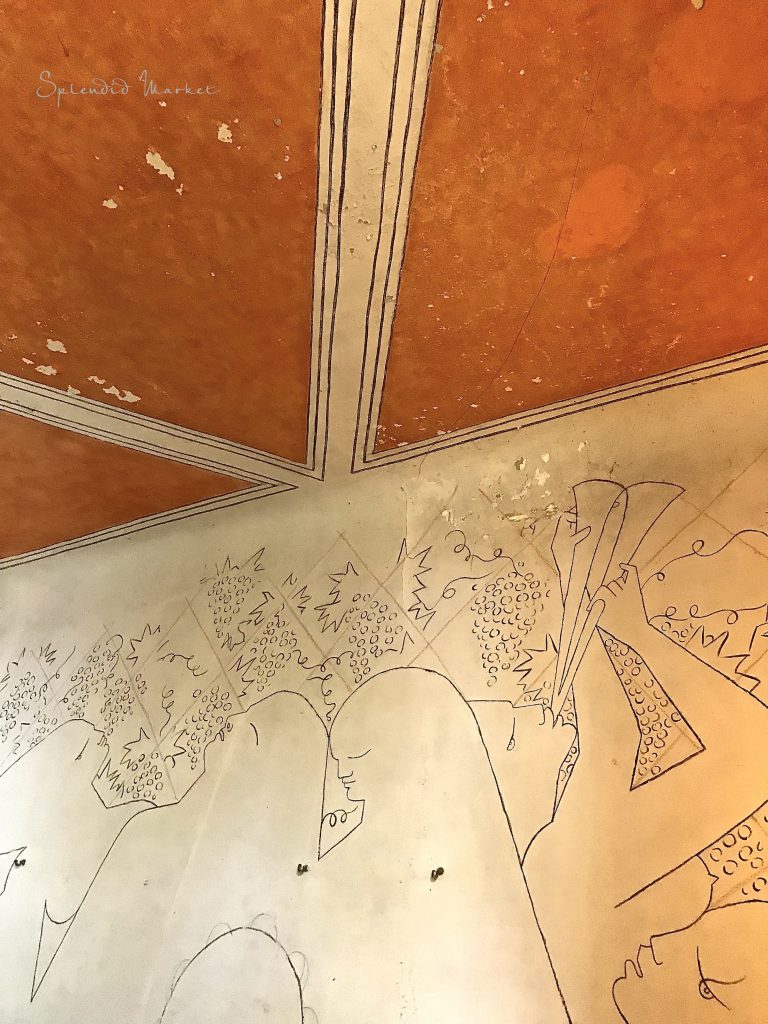
This bathroom was impressive with it’s olive arched ceiling and the french botanical tiles surrounding the bath.
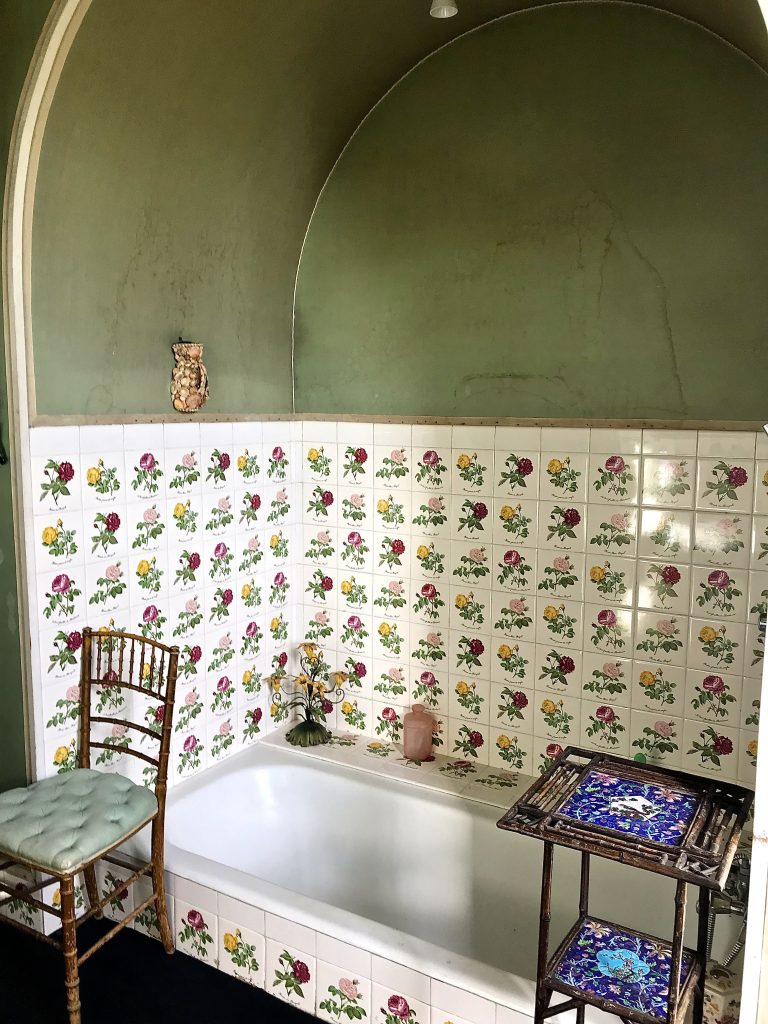
The floral theme continued around the room with this pretty rose covered sink, all complimented by the verdant background.

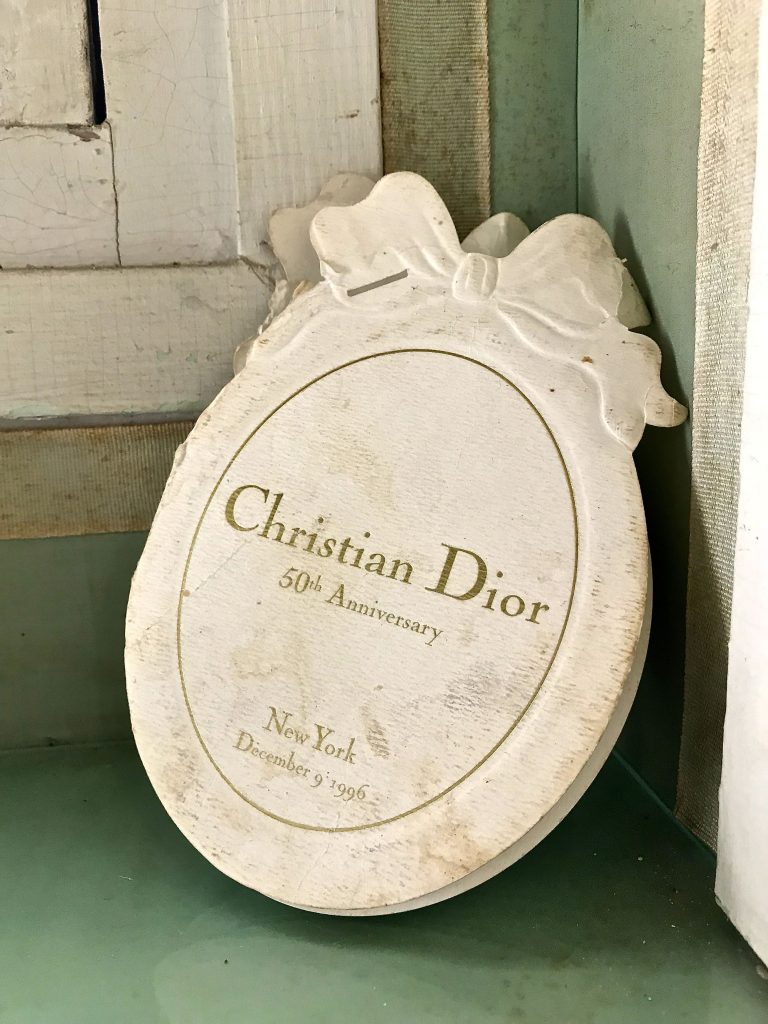
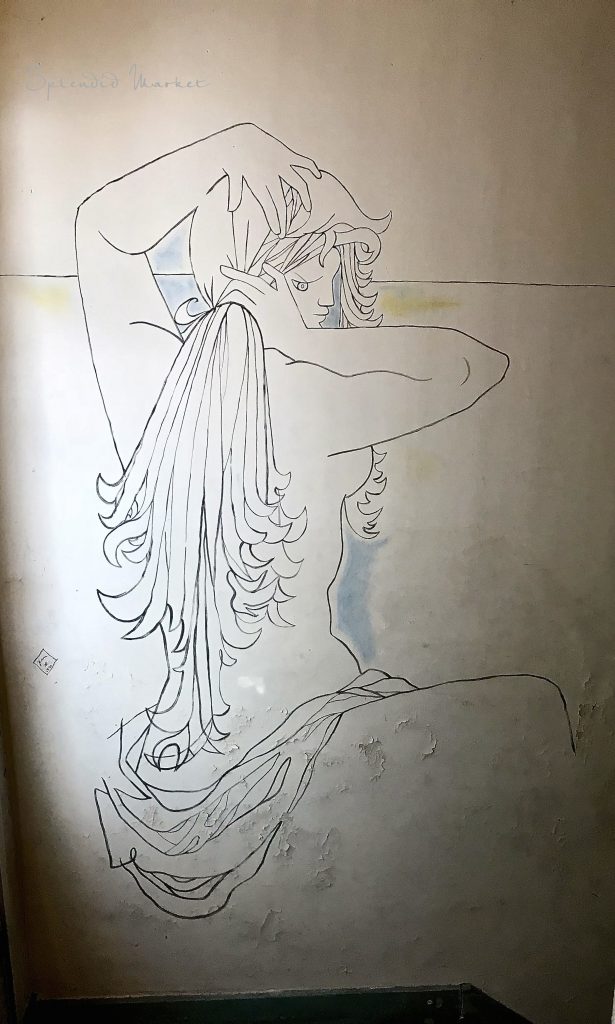
This room tells the tale of Diana, the goddess of the woods and what happened when Actéon comes upon she and her nymphs in a decorative cave “Surpris par Diane et ses nymphes, Actéon va etre change en cerf”, or “Surprised by Diana and her Nymphes, Aceteon will be changed into a deer”. I love the pale blue ceilings in this room and the black stripes that create a faux molding.
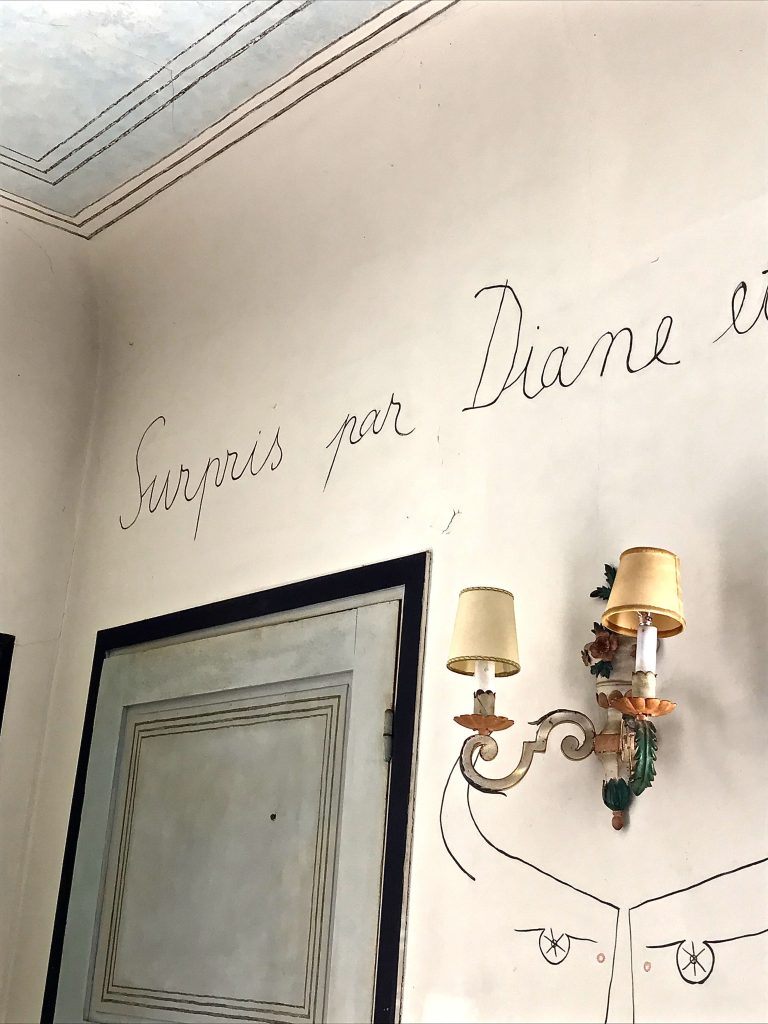
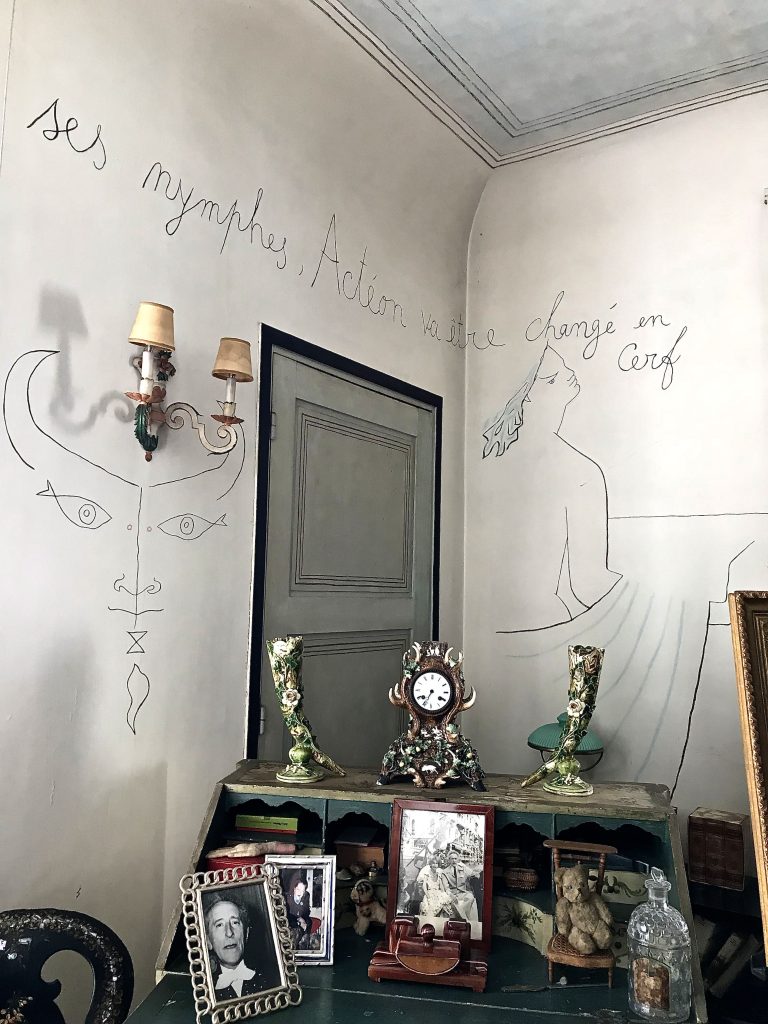
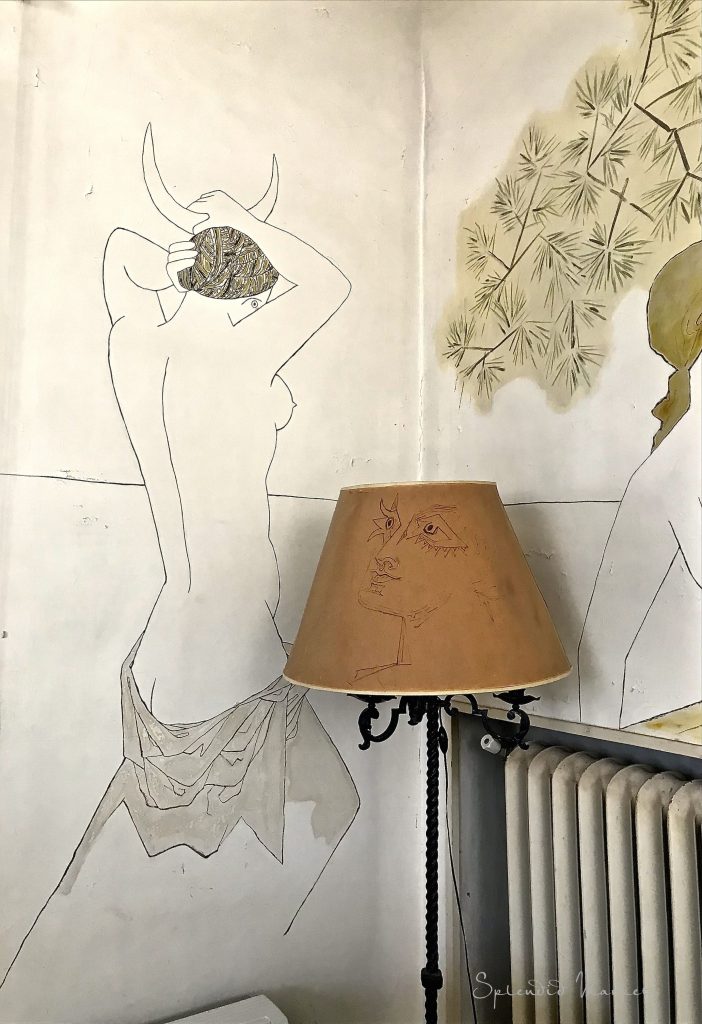
More mythyological creatures and again, a Fougasse, the traditional hand-like flatbread of Nice.
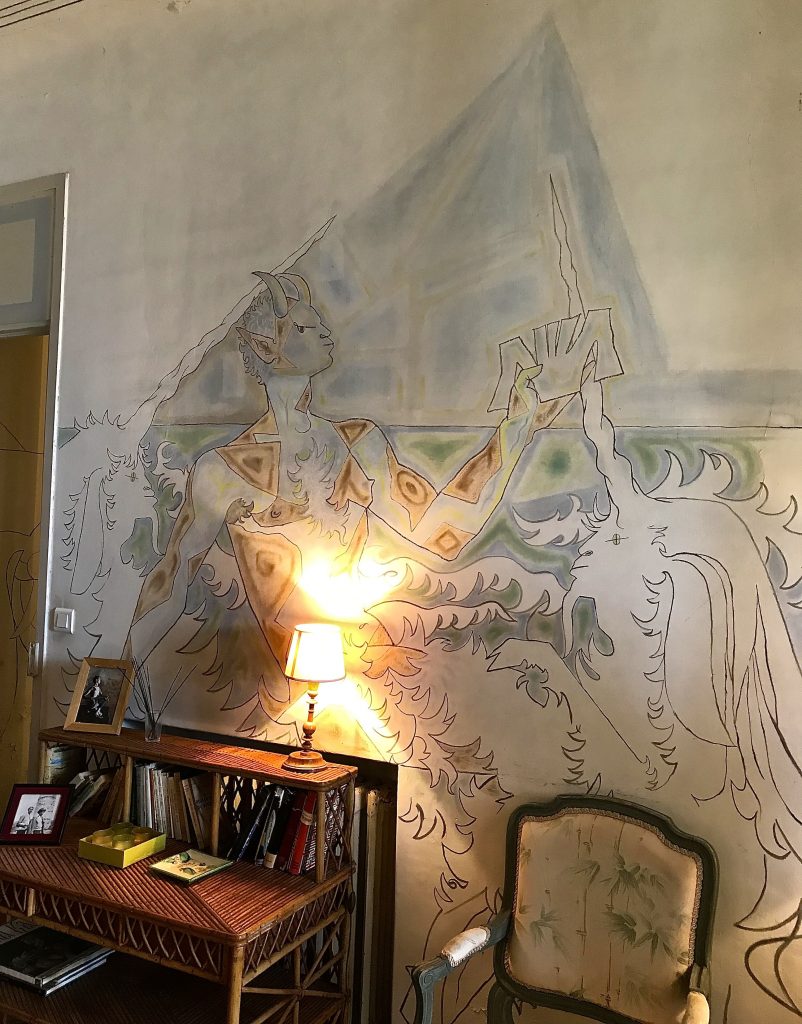
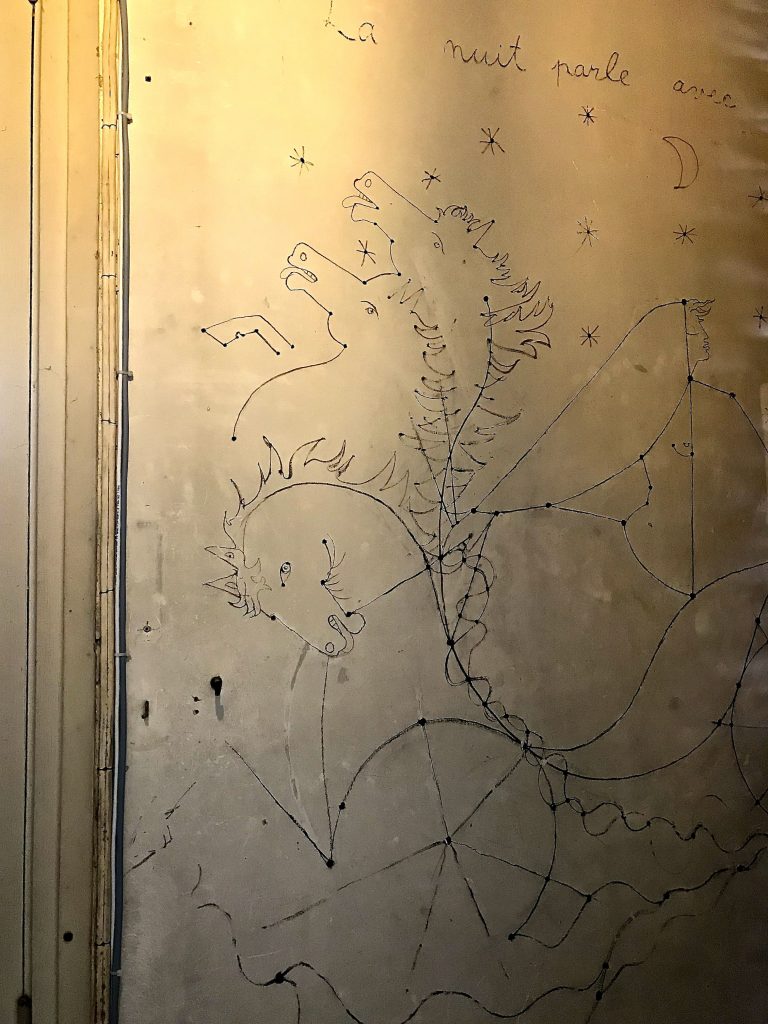
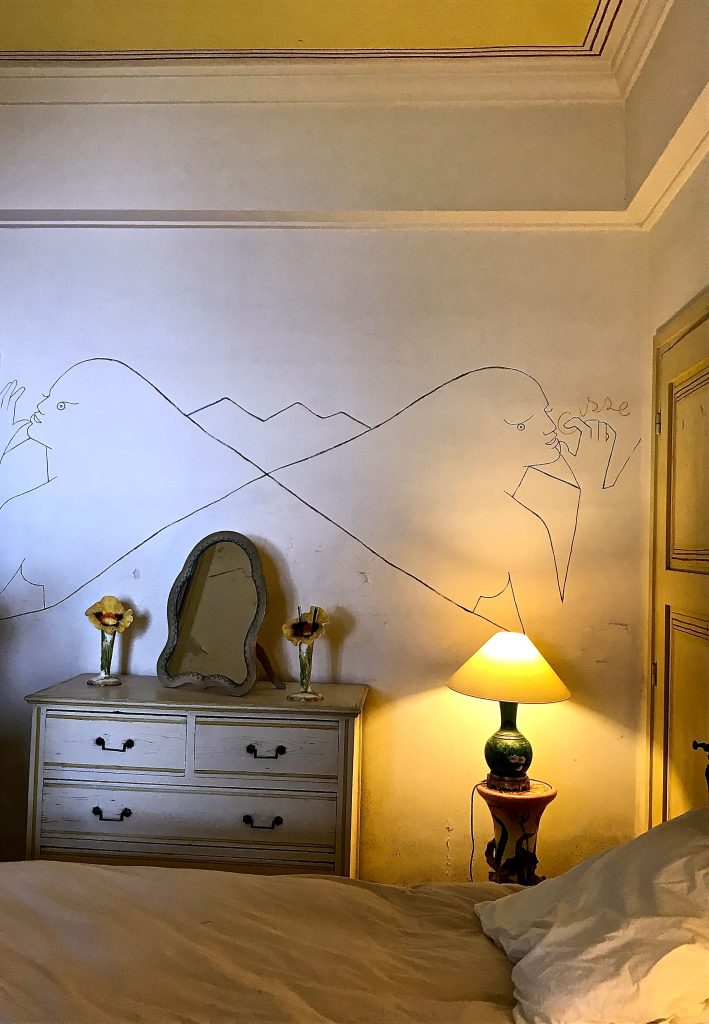
Even some of the furniture and doors were adorned with Cocteaus distinctive art style. The fish shaped eyes he uses to indicate the local fishermen. I first saw this when I visited the absolutely stunning little Romanesque~style chapel Cocteau painted in Villafranche~sur~mer, the Chapel Saint~Pierre a tribute to the local fishermen {Pierre is the patron saint of fishermen} who used to store their nets in the tiny chapel on the sea before Cocteau organized local artists and craftsmen to help restore the building.

Cocteau painted the interiors and they are magical, the petite Chapel Saint-Pierre is a certainly a must~visit in this area.
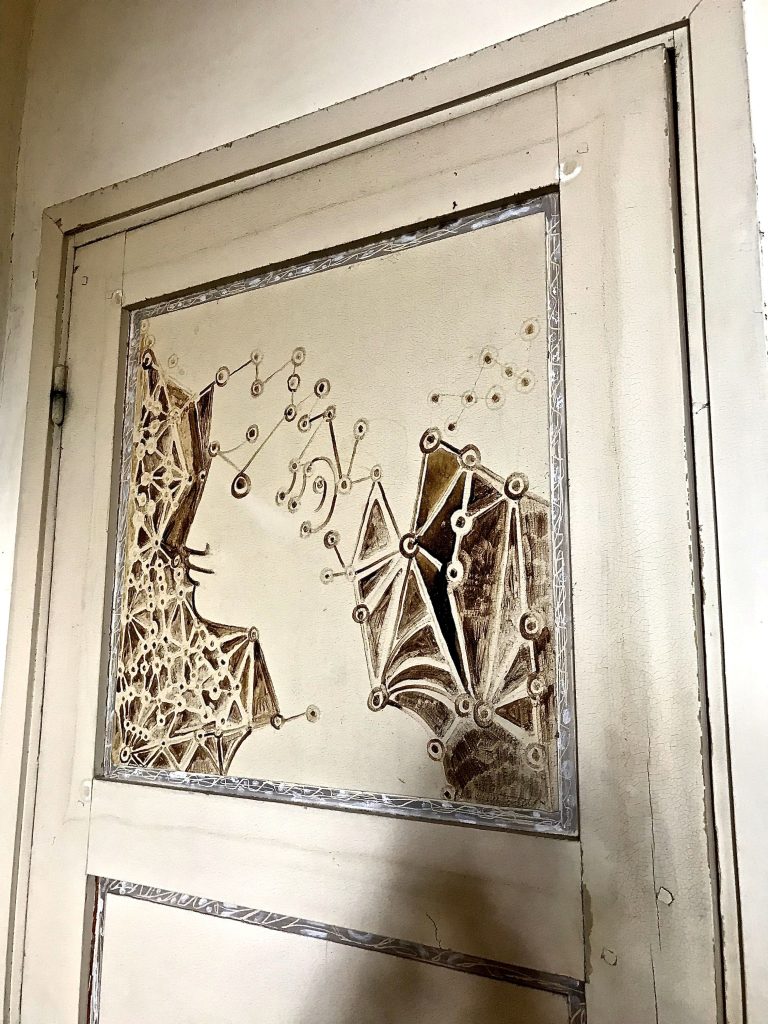
Also on display were some of the promotional prints the artist created for regional events:
a regatta in Monaco,
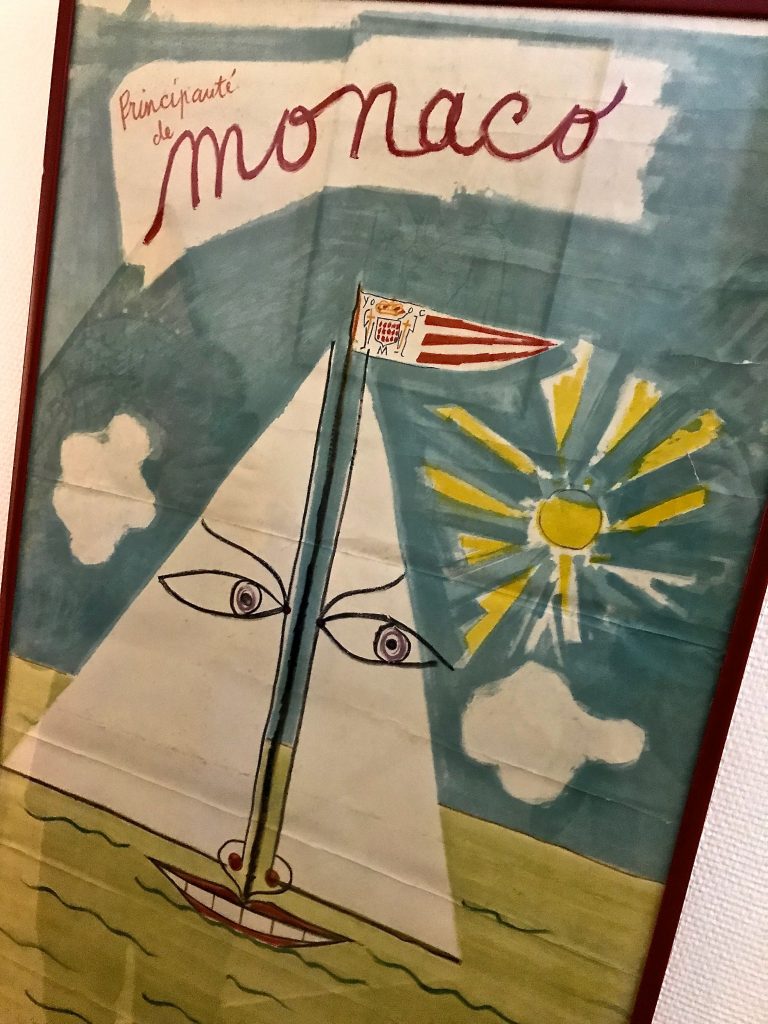
announcing the beginning of the Carnaval de Nice,

and here, a self-portrait for a play written by Carole Weiseiller about her life growing up at Villa Santo Sospir with Mr. Cocteau {as she called him}, Je l’appelais Monsieur Cocteau.
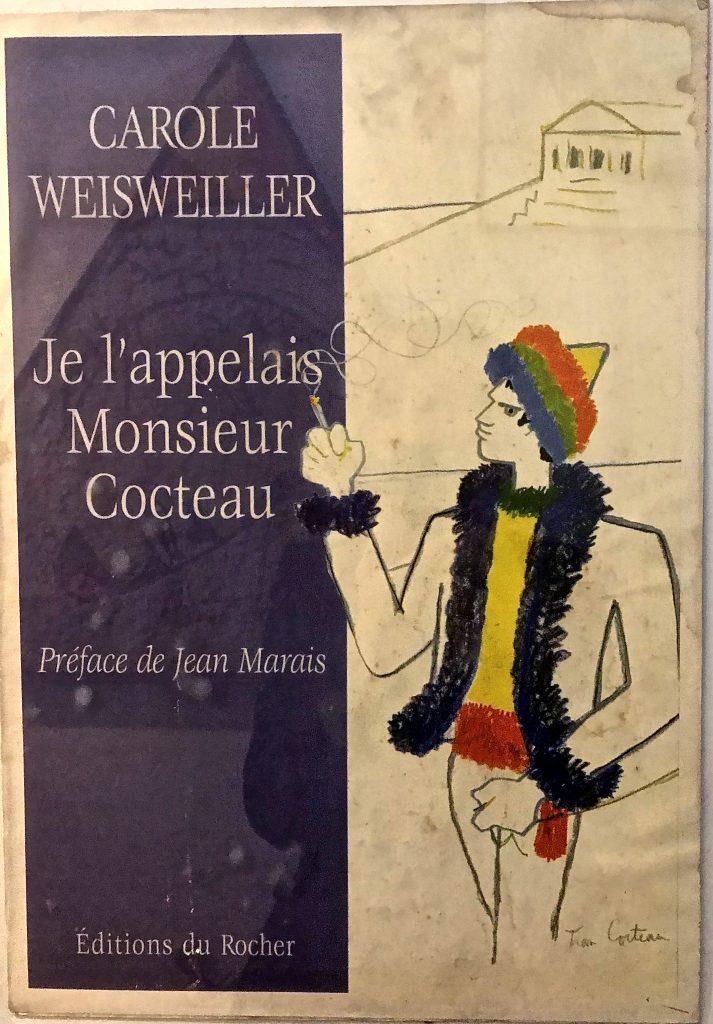
In the entrance {also the exit} Cocteau created these two heads with serpents in mosaic for the walkway
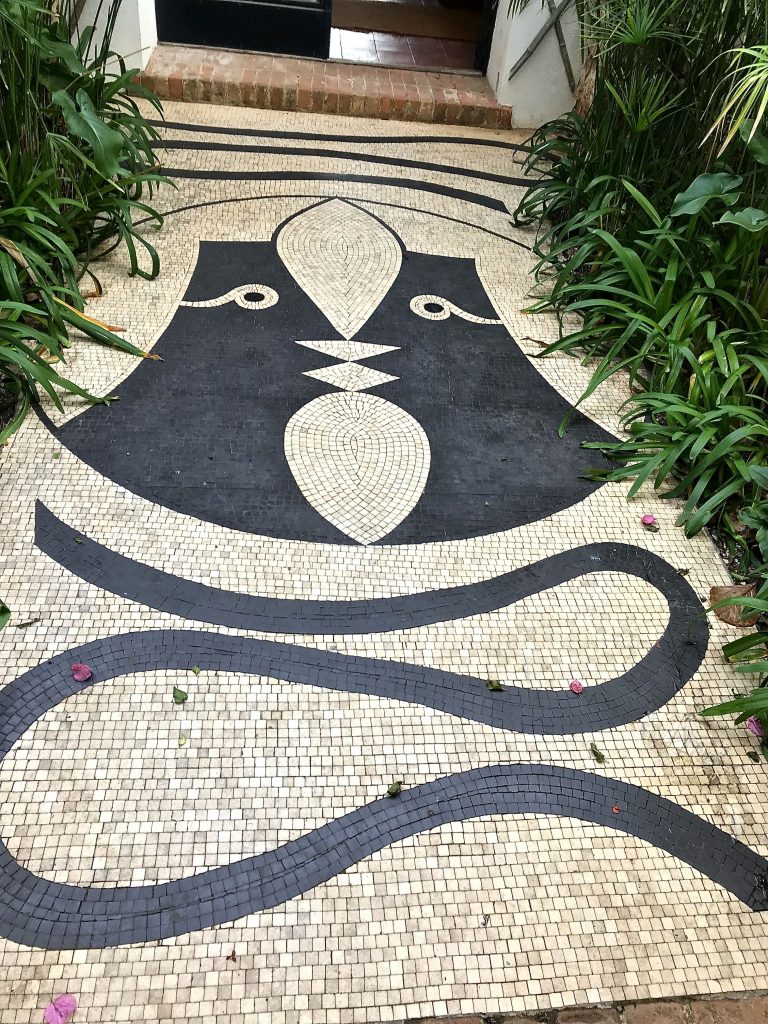
and the head of Orpheus on the side wall.
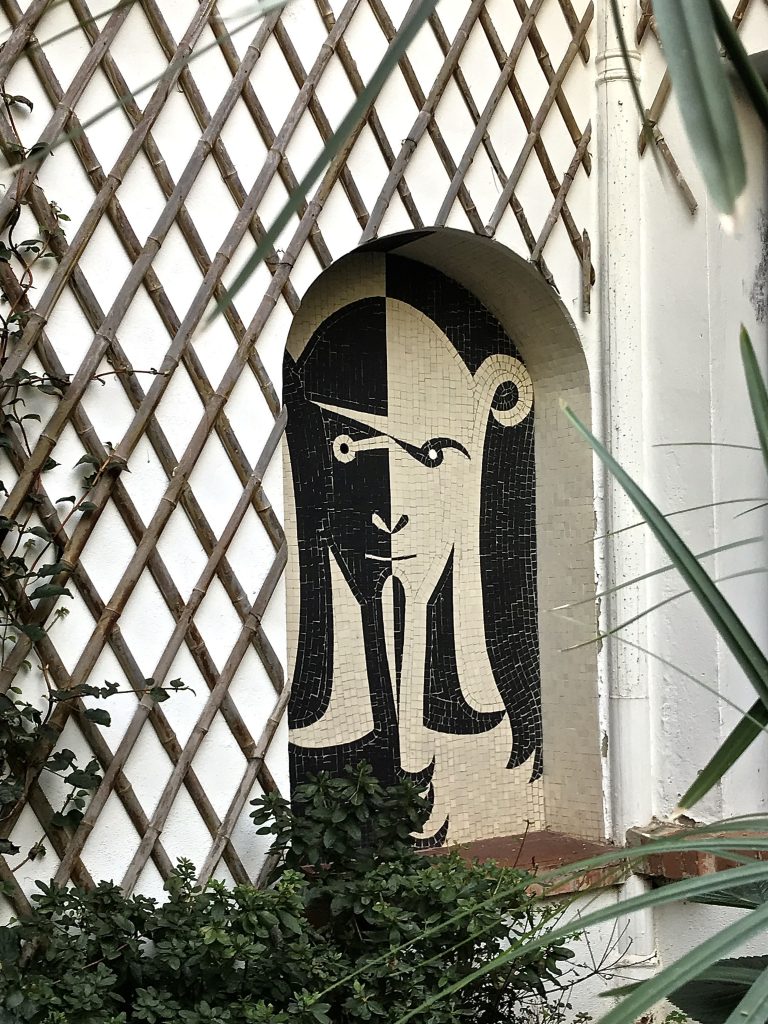
There are a few books that capture this magical era at Villa Santo Sospir, in addition to Jean Cocteau: Les Annees Francine 1950-63 including Les Murs de Jean Cocteau, Je l’appelais Monsieur Cocteau, ou Le Petite Fille aux deux Mains, {I called him Mr. Cocteau, or the little girl with two left hands}
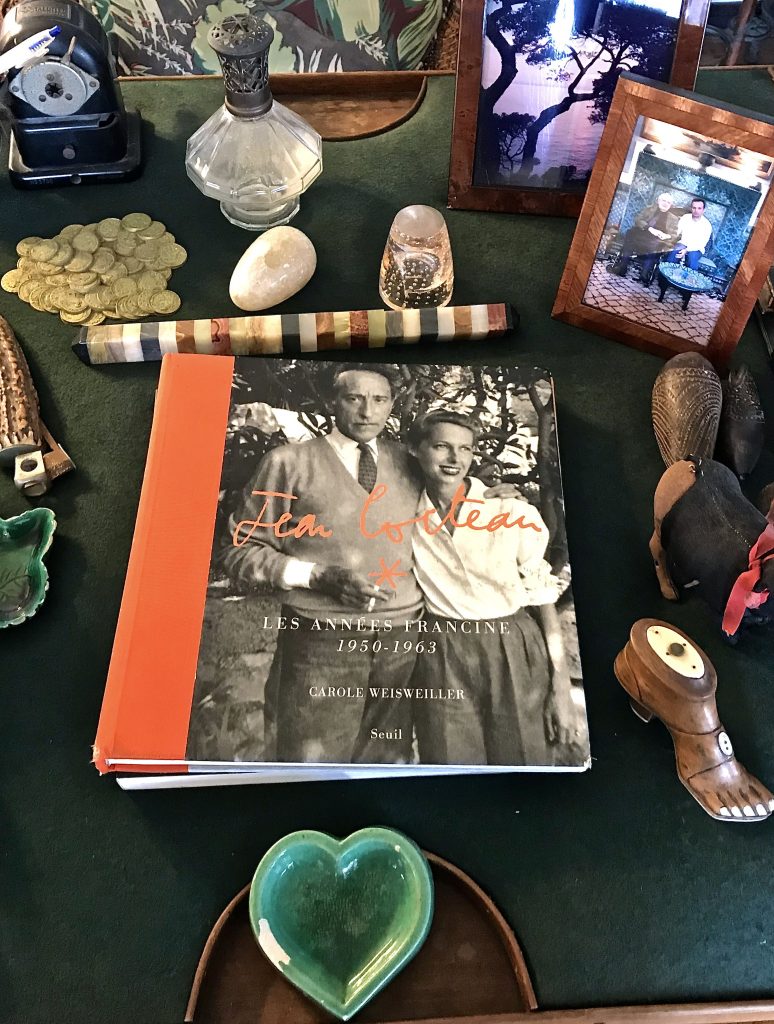
“Picasso, Matisse, Chagall, and my very self, on this coast where Renoir lived. We have tried to overcome the spirit of destruction that dominates the time; we decorated the surfaces that men dreamed to demolish. Perhaps, the love of our work will protect them against bombs.” ~Jean Cocteau
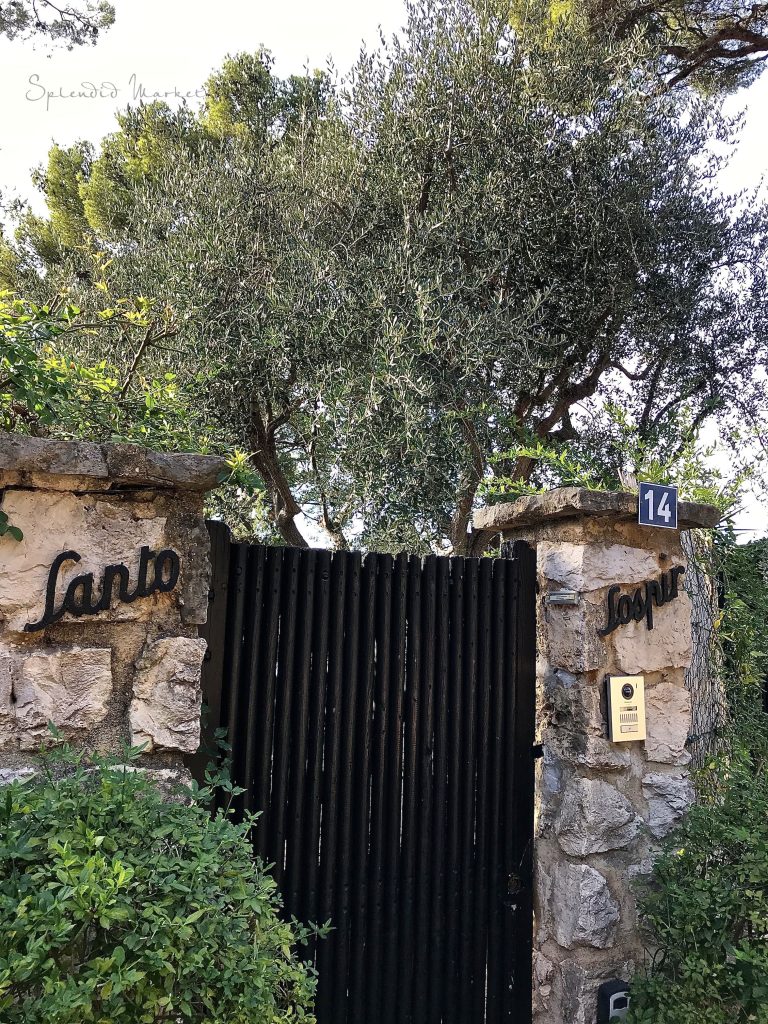
Thank you for joining me on this tour, please let me know if you have any questions.
To visit concact Eric Marteau:+33 (0)4 93 76 00 16, visits@santosospir.com
For Special Events contact Marina Melia: +33 (0)7 68 08 51 92, marina@santosospir.com
Je te souhaite une bonne année!


